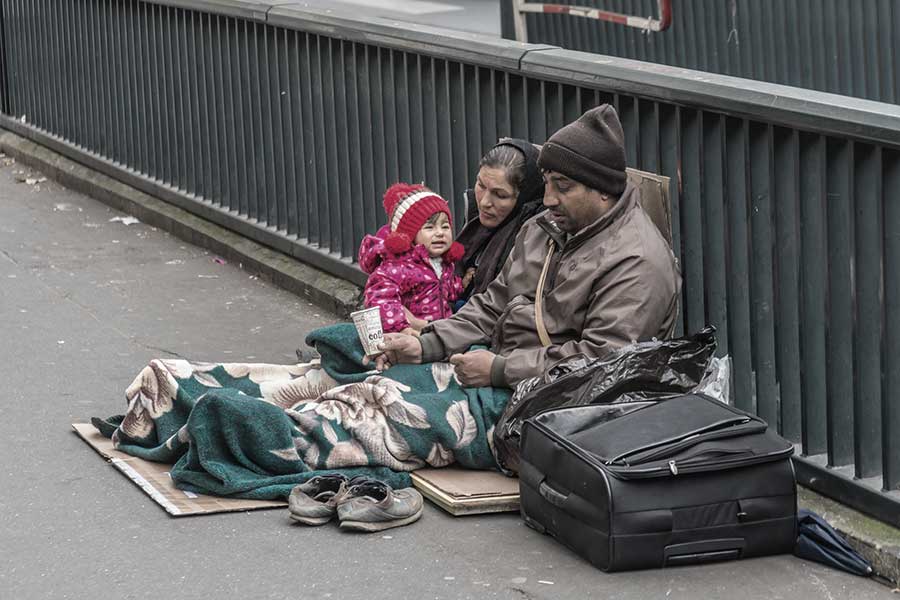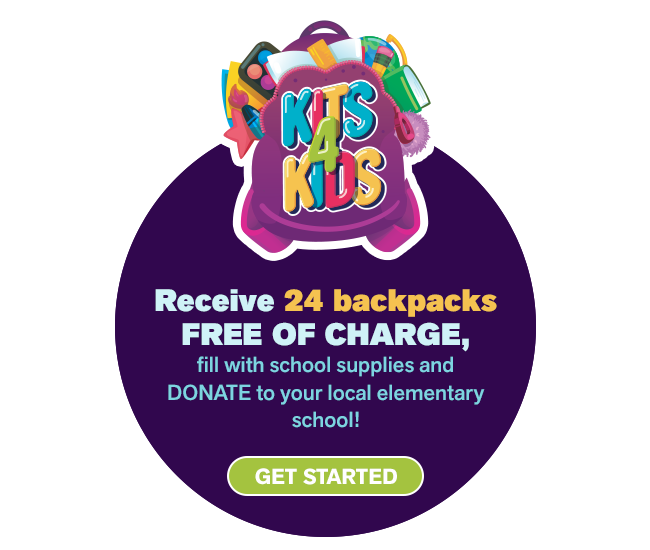ARTICLE
OUR NEIGHBORS, THE HOMELESS
Perhaps when we think of the homeless, we picture the guy on the street corner with the little cardboard sign begging for a donation. We imagine he wants cash for his next vodka bottle or cocaine hit. There’s some truth to that, but the full story of the homeless is much different…

Who Are the Homeless?
Families.
Sometimes two-parent families; sometimes single parent families.
Families become homeless for a variety of reasons. Families are forced into homelessness from the loss of employment due to lay-offs. This has been especially acute in 2020 due to the Covid-19 epidemic. Sometimes one of the adults in a family suddenly may not be able to work because of a serious illness or accident. Without that income, the family can’t pay their rent. They are evicted from their apartment. Perhaps other new and mandatory expenses have arisen. Women with their children can become homeless to escape physical and psychological abuse.
A large number of US families can only find work in low-paying jobs. A person earning the federal US minimum wage of $7.25/hour and working a 40-hour week would have to spend 72% of their income on a $900/month apartment. The absence of savings to deal with crises in these families is common, given their normal expenses and low incomes. Homeless families often lack any relatives willing or able to provide temporary housing.
Individuals.
Another group of people among the homeless are the mentally ill, again without any extended family to support them. These illnesses cover a wide range such as developmental disorders, PTSD, schizophrenia, and the consequences of prolonged substance abuse. Individuals with ongoing alcoholism and drug addictions are often among the homeless.
Shelter Life
Most homeless shelters are set up to provide temporary, overnight housing. For some of the homeless, this is all they really want and then have a strong desire to be out on their own during the day. Overnight shelter is, of course, especially needed on cold winter nights. Unfortunately, shelters, for all the good they do, cannot help out in many important ways. Life in a shelter provides quite limited access to medical and dental care, eye care, hygiene products and employment counselling. Families in shelters are often subject to separation from one another.
Yet shelters can be a small part of the life of some of the homeless. Some actually prefer the street. They don’t trust shelters OR can’t live with the shelter’s rules. They may find the shelter full or actually feel safer on their own. Some homeless prefer to shelter in a car, in an abandoned building. Some can actually have some sort of tent. About one fourth of all homeless fit in this category called “rough sleeping”.
Duration of Homelessness
In addition to considering how the homeless got there; it is useful to reflect on how long they are likely to remain homeless. There is a population of the chronic homeless. These are mostly the mentally ill and addicted. Others experience episodic homelessness, maybe 2-4 times a year – arising from addiction and from health issues. The third group are the transitional homeless; those who have suffered a major life change, typically a job loss. Finally, there are the hidden homeless. They have no place to call their own, no place for their stuff, they are couch-surfing with friends or relatives, but at least have food and warmth.
Some Statistics
How many of the homeless are families and children, how many are individuals, and how many are chronically homeless depends a lot on what city or county one is talking about and what year the survey was taken. Covid-19 seems to have greatly increased the percentage of the homeless who are families.
Best one can do is cite a few examples:
- In Palm Beach county Florida, the school district reports about 2,000 of the children enrolled in the public schools are homeless.
- Coalitionforthehomeless.org reports 75% of the homeless in New York City in 2016 were families and 40% were children. Elsewhere individuals are usually more prevalent.
- For example, according to lahsa.org, in the city of Los Angeles 80% of the homeless on a particular night in January 2020 were individuals and only 20% were part of a family. The chronically homeless were 38%.
- The Los Angeles county-wide system seems to work well. Of 83,000 newly homeless in 2019, some 53,000 figured out a solution on their own (“self-resolved”) and 23,000 were placed into semi-permanent housing.
- Endhomelessness.org cites the one-night US-wide survey in January 2019 as showing 568,000 homeless on that night. Of these 63% were in a shelter or transitional housing and 37% were living on the street or an abandoned building. Individuals were 70% and families were 30%. Veterans were 7% and unaccompanied children or young adults were 6%. The chronically homeless were 17%.
- Fredvictor.org estimates the homeless population in Toronto on any given night to be a bit above 9,200.
Some Ways to Help Your Homeless Neighbors
- Support your local homeless charities through The Garden’s 2020 Winter Appeal.
- Consider ongoing financial support thereafter. Your local homeless charity will certainly have a need for financial support and will use it well (yet check their rating). Beyond funding, the most important thing you can do is to call them up and ask what they need. They will know best and you should not make assumptions. Some charities will have an Amazon wish list.
Here is a list, from a charity website, of the typical items a homeless charity/shelter might need:
- hygiene kits
- new socks
- long johns
- new underwear
- blankets
- feminine hygiene products
- diapers, first-aid kits
- simple refreshment supplies
- earbuds
- aspirin
- school supplies
- backpacks/totes
- kid’s toys
- Perhaps you have skills, such as teaching life skills that can be put to good use at the shelter.
- With adequate supervision, perhaps enquire about taking the children on a half-day outing.
Some Ideas To Help Homeless Individuals
- NO CASH (Provide fast food or grocery gift cards instead).
- Share God’s love – you can do that by simply speaking to them and spending time with them.
- Talk to them with respect. Acknowledge their value as people.
- Recognize the diversity of their problems. Pray for them.
- Make sure you yourself are SAFE. Be in sight of others always. Be aware that some small percentage of the homeless have criminal behaviors and some others are mentally ill. They might manifest their illness through violence.
Additional Online Resources
- Rescue Mission. A great number of cities and areas have Rescue Missions, each location seems to operate its own webpage. Google ‘rescue mission’ and pick one near you. Learn what they are doing in your area.
- Volunteers of America (voa.org). It’s an organization worth knowing about. Open the Menu, then select ‘Our Services’ to see what another group does.
- Covenant House (covenanthouse.org). The Youth Homeless page contains a lot of good information.
- Bowery Mission (bowery.org). The Bowery Mission is a New York City charity, but you can learn a lot about homelessness in general. Click on The Need, then read ‘Facts About Homelessness’ and ‘Tips on Helping the Homeless’.
- The Renewal Project (therenewalproject.org). This is an Allstate Insurance company sponsored charity. There is a useful page on what homeless shelters typically need.
- Lifebridge North Shore (lifebridgenorthshore.org). Lifebridge is a charity for the northern suburbs of Boston. Lots of good insights and ideas for how homeless people can be supported by a community.
- Invisible People (invisiblepeople.tv). Yet another really good place to learn more.
- Fredvictor.org – A Toronto charity with reasonable data. Recent data on homelessness in Canada provided difficult to find. Homelesshub.ca may also be useful.
- Endhomelessness.org – This site has good US data.
- Pitinoshelter.org/ten-myths-about-homelessness – A good read to dispel any residual doubts you have about the sorts of people who need help.

